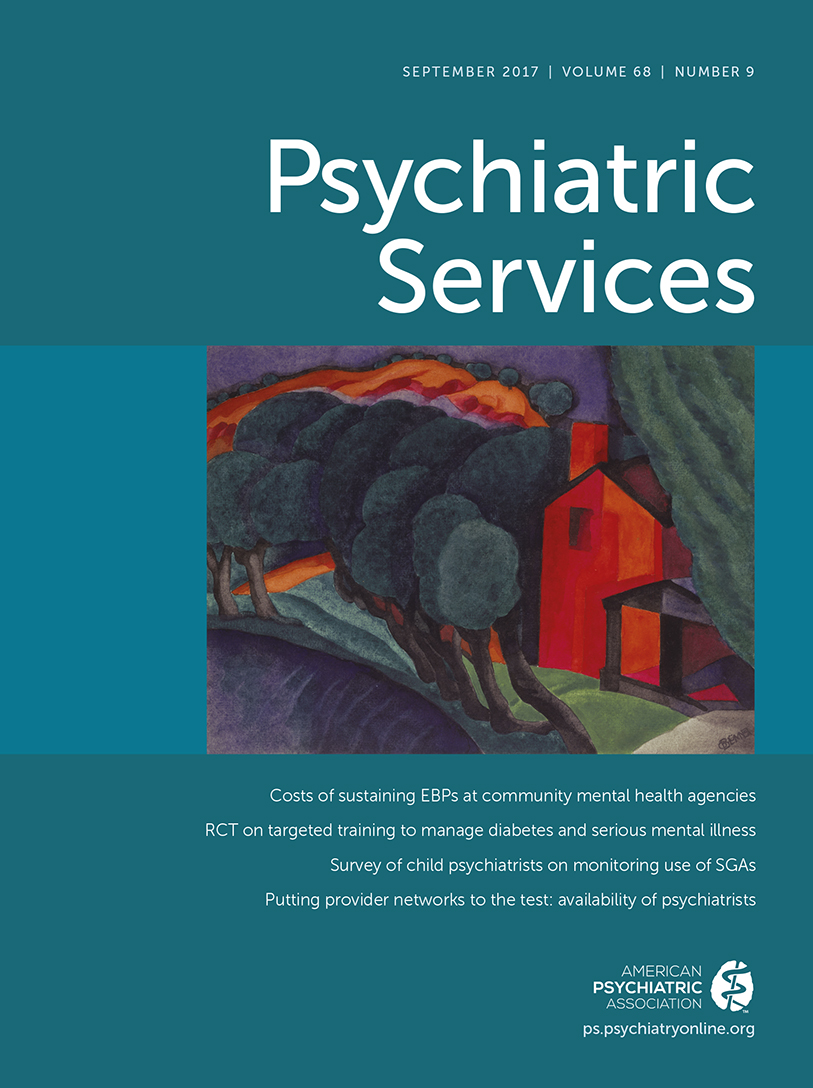Suggesting a Medical-Psychiatric Cohort for ACT Treatment
Vanderlip and colleagues, in their article “Systematic Literature Review of General Health Care Interventions Within Programs of Assertive Community Treatment,” comment on recent research that questions the cost-benefit yield of assertive community treatment (ACT) services (1). They give various reasons, such as the widespread implementation of intensive case management programs, the shorter length of hospital stays, and less fidelity to the ACT model. They do not speculate on another possible reason: the relatively recent inclusion of ACT team clients who do not particularly benefit from ACT treatment. We comment on one such group of clients and suggest the inclusion of another patient group who may be uniquely suited to benefit from the ACT treatment model. In line with the Vanderlip article, the treatment of this group would involve extensive general health care interventions.
Clients with a serious mental illness plus a substance use disorder were not initially considered typical patients for the ACT model. Over the past several decades, substance abuse counseling has been integrated into ACT teams; however, the extent of ACT treatment benefit to patients with co-occurring disorders remains unclear. Green et al. (2) noted that these individuals benefit but that it has minimal impact on their substance use. Fries and Rosen (3) reviewed the literature to determine the efficacy of ACT in treating substance use disorders and concluded that “integrated ACT, in which the ACT team provides substance abuse counseling, has the potential to reduce substance use by several mechanisms, but this has been difficult to demonstrate in clinical trials when participants in control groups receive similar interventions.” Our 11-year experience with a New York ACT team has led us to a similar conclusion. Over these years, our impression has been that patients with co-occurring disorders who have been assigned to the team have had increasingly severe substance abuse problems, which have made these clients less amenable to ACT treatment. Approximately one-fifth of our 68 clients fall into this category. In many of them, an argument could be made that substance abuse—not the stated schizophrenia, schizoaffective disorder, or bipolar disorder—is the primary diagnosis. We suggest that current ACT treatment may be overused when co-occurring disorders involve severe substance abuse problems, and we recommend more testing for cost and treatment efficacy of ACT in this group.
By contrast, the team has successfully worked with individuals with medical conditions that imitate or exacerbate psychiatric disorders. We published a brief report of a young woman with Graves disease who was not adherent to treatment and whose condition was misdiagnosed as bipolar type I disorder (4). There has also been success in diagnosing and treating patients who have serious mental illness and comorbid sleep apnea; insulin-dependent diabetes mellitus, including a diabetic patient who abused caffeine (extreme cola consumption); and water intoxication due to primary polydipsia (5). This work has been rewarding. We believe the ACT model is underused in treating patients who have these types of issues and suggest further evaluation of the ACT model for the treatment of this cohort.
1 : Systematic literature review of general health care interventions within programs of assertive community treatment. Psychiatric Services 68:218–224, 2017Link, Google Scholar
2 : Schizophrenia and co-occurring substance use disorder. American Journal of Psychiatry 164:402–408, 2007Link, Google Scholar
3 : The efficacy of assertive community treatment to treat substance use. Journal of the American Psychiatric Nurses Association 17:45–50, 2011Crossref, Medline, Google Scholar
4 : The assertive community treatment team: an appropriate treatment for medical disorders that present with prominent psychiatric symptoms. Primary Care Companion for CNS Disorders 16: 2014Medline, Google Scholar
5 : Let’s Talk: The Experts Blog About Mental Health: Assertive community treatment teams: questions for discussion. Journal of Clinical Psychiatry, March 18, 2015. http://www.cmeinstitute.com/pages/lets-talk.aspx?bid=106Google Scholar



